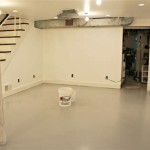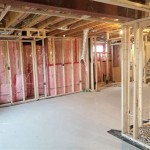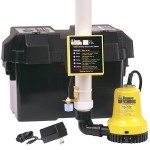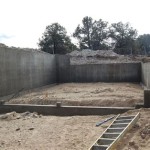Essential Aspects of Building a Basement Bathroom
Transforming your basement into a functional living space often involves adding a bathroom. Creating a basement bathroom requires careful planning and attention to specific considerations. This guide delves into the essential aspects of building a basement bathroom to ensure a successful installation.
Planning and Permits
Before embarking on construction, proper planning is crucial. Consider the location of the bathroom within the basement, ensuring accessibility and proximity to existing plumbing lines. Determine the size and layout of the bathroom, accommodating essential fixtures such as a toilet, sink, and shower or tub. Additionally, obtain necessary building permits from your local authorities.
Waterproofing and Drainage
Basements are prone to moisture and water infiltration. To prevent water damage, install a comprehensive waterproofing system. This includes sealing walls and floors, applying a waterproofing membrane, and installing a sump pump to remove excess water. Proper drainage is also essential. Use a floor drain in the bathroom to prevent water buildup and direct it to a drain line.
Ventilation and Lighting
Adequate ventilation is vital in basement bathrooms to prevent moisture buildup and mold growth. Install an exhaust fan to circulate air and remove moisture. Ventilation ducts should be properly sized and connected to the exterior of the building. Additionally, provide adequate lighting to ensure a well-lit and safe bathroom environment.
Plumbing and Electrical
Proper plumbing and electrical work are essential for a functional bathroom. Extend existing plumbing lines or install new ones to supply water to the fixtures. Ensure that the drainage system is correctly connected to the main sewer line. Hire a licensed electrician to install electrical wiring, outlets, and lighting fixtures.
Materials and Finishes
Choose moisture-resistant materials for the bathroom, such as ceramic tile or vinyl flooring. Walls can be finished with drywall or waterproof panels. Consider using mold-resistant paint to minimize potential moisture issues. Select fixtures and hardware that complement the overall design.
Cost and Timeline
The cost of building a basement bathroom varies depending on the size, complexity, and materials used. Factor in expenses for materials, labor, permits, and professional services. Establish a realistic timeline for the project, considering potential delays due to unforeseen circumstances.
Professional Assistance
Consider consulting with professionals such as architects, engineers, and contractors to ensure proper design, installation, and code compliance. They can provide expert guidance and oversee the project's execution.
Conclusion
Building a basement bathroom requires careful planning and attention to essential aspects. By addressing waterproofing, drainage, ventilation, plumbing, materials, cost, and seeking professional assistance, you can create a functional and stylish bathroom that adds value to your basement space.
How To Plumb A Basement Bathroom Diy Family Handyman

No Rough In Problem Our Diy Bathroom Basement From A Closest Cheap And Beautiful This Life

How To Finish A Basement Bathroom Before And After S

How To Finish A Basement Bathroom Before And After S

How To Finish A Basement Bathroom Pex Plumbing

How To Add A Bathroom Basement The Easy Way Diy Family Handyman

How To Finish A Basement Bathroom Before And After S

How To Frame An Unfinished Basement Bathroom Youtube

Adding A Basement Bathroom What You Need To Know Make It Right

A Basement Bathroom Renovation Merrypad
See Also








